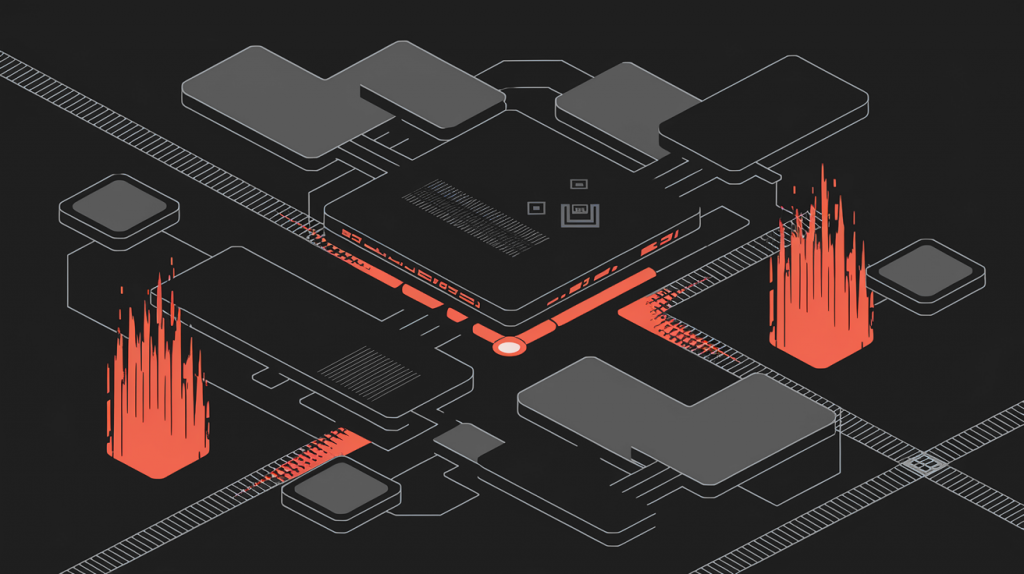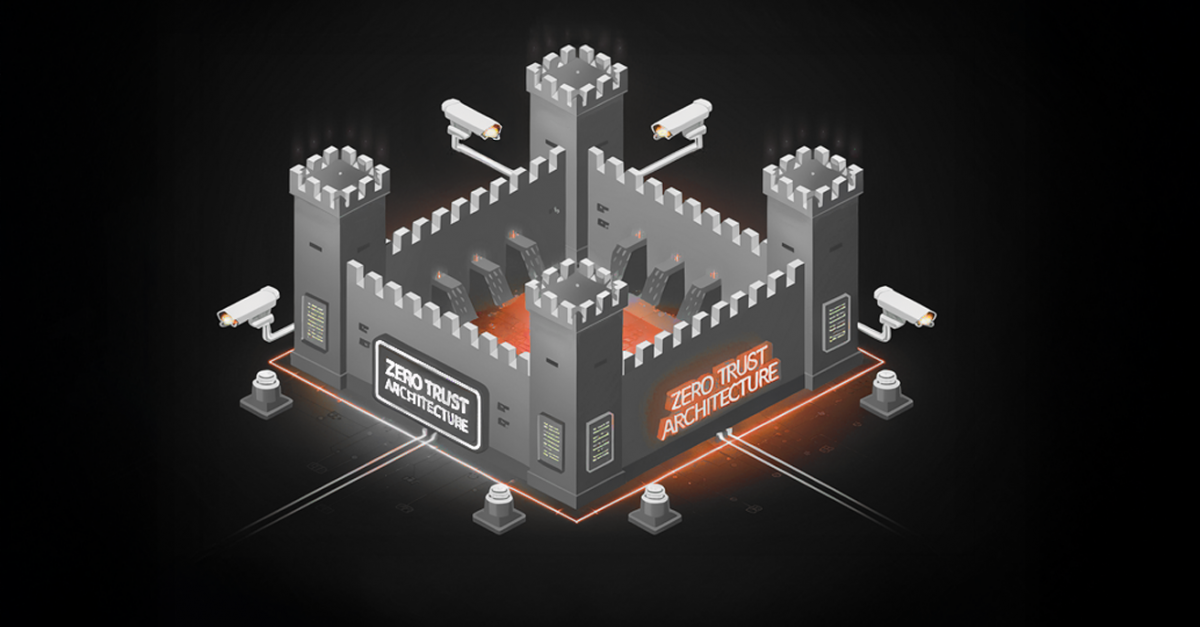You’ve probably heard the term “zero trust” tossed around in security circles for years now. But what exactly does it mean for your business? Is it just another fancy word, or is there real value behind the concept?
Here’s the reality: traditional security approaches are failing us. The “castle and moat” model, where you defend the perimeter and trust everything inside, simply doesn’t work in a world where your data and applications are everywhere in multiple clouds, on employee devices, and accessed from home networks.
Zero trust takes the opposite approach. Instead of automatically trusting users and systems inside your network, it treats every access request as if it originates from an open, untrusted network. In other words: “never trust, always verify.”
But is it worth the investment? Let’s dig into what zero trust really looks like and the concrete benefits it brings to organizations that implement it properly.
What Zero Trust Actually Means (Beyond the Hype)
At its core, zero trust is a security model that eliminates implicit trust from your IT architecture. It requires strict identity verification for every person and device trying to access resources, regardless of their location.
This approach assumes threats exist both inside and outside your network. Traditional security resembles an office building with a security guard at the entrance but free movement once inside. Zero trust is more like a secure facility where your credentials are continuously verified at each access point, ensuring you’re authorized for that specific resource.
Zero trust operates on these core principles:
- Verify explicitly: Always authenticate and authorize based on all available data points, including user identity, location, device health, and behavior patterns.
- Use least privilege access: Limit user access with Just-In-Time and Just-Enough-Access to minimize exposure.
- Assume breach: Operate as if attackers are already inside your network. Segment access, verify all traffic, and use encryption extensively.

A Practical Look at Zero Trust in Action
Let’s make this more concrete with an example using Admin By Request’s Endpoint Privilege Management (EPM) product.
Imagine Sarah, a developer at a financial technology company. In a traditional setup, Sarah might have permanent admin rights on her workstation to install development tools. This keeps her productive, but creates a security problem: if she accidentally runs malware, that malware gets those same admin privileges.
In a zero trust environment using EPM, Sarah would have standard user privileges by default, even though she’s a trusted employee. When she needs to install development tools, she requests elevation through Admin By Request. The system verifies her identity, checks that her device meets security requirements, and confirms the application isn’t malicious by checking it against VirusTotal.
Sarah gets temporary admin rights specifically for that installation, and only for the time needed. The action is logged in detail, creating an audit trail. Once the installation completes, admin privileges automatically revoke, there’s no lingering access.
This approach significantly reduces the attack surface. If Sarah’s machine is compromised, the attacker doesn’t automatically get admin rights. And if Sarah’s credentials are stolen, the unusual behavior patterns would trigger additional verification requirements.
That’s zero trust in action: context-aware, continuous verification with just-in-time access that limits potential damage.
7 Benefits That Make Zero Trust Worth It
1. Protection Against Advanced Threats
A zero trust model gives you two big security wins right off the bat.
First, it shrinks your attack surface. By getting rid of those “always-on” admin privileges and making everyone verify access each time, you close a lot of the doors that hackers love to exploit. Every access request needs verification, which means far fewer ways for attackers to sneak in.
Second, it contains breaches when they do happen. Strict access controls and network segmentation keep attackers boxed in if they manage to breach one area. Instead of having free run of your network, they’re stuck in a limited space, turning what could be a disaster into a manageable problem.
This isn’t just theoretical – organizations implementing zero trust architecture see an average reduction of $684K in risk impact over a span of four years.
2. Enhanced Visibility and Control
One of the biggest wins with zero trust is the visibility you get. By logging and monitoring all access requests, you suddenly have eyes on everything happening across your environment.
This means you’ll:
- Spot fishy behavior patterns before they become problems
- See who’s accessing what and when
- Know which resources people actually use
- Have detailed records for when you need them
This visibility isn’t just about security – it’s about having the data to make better decisions across your entire IT operation. You get a clear picture of how resources are being used, which helps with everything from capacity planning to user experience improvements.
3. Streamlined Regulatory Compliance
If compliance feels like a never-ending headache, zero trust might be your new best friend. Frameworks like GDPR, HIPAA, and PCI DSS all want the same thing: prove you’re controlling who accesses sensitive data.
Zero trust builds this directly into how you operate:
- Only authorized people get access to sensitive stuff
- Every access attempt is logged and verified
- Your controls are granular and consistent
This means you spend way less time scrambling before audits and more time running your business. Your security team will thank you for not having to pull all-nighters before the auditors show up.
4. Simplified Security Architecture
It sounds backwards, but zero trust can actually make your security setup simpler while making it stronger.
Traditional security piles on product after product at your perimeter, creating a mishmash of tools that don’t always play nice together. Zero trust focuses on identity and access, creating a more straightforward approach that:
- Reduces security management complexity
- Cuts down on the number of products you need
- Creates more consistent security rules
- Makes policies clearer and easier to implement
With this, protection becomes systematic rather than a patchwork of point solutions.
5. Better Support for Modern Work
Let’s face it: the days of everyone working in the office behind a nice secure perimeter are gone. Remote work, BYOD, and cloud services have blown traditional network boundaries to bits.
Zero trust was built for this reality. Since it doesn’t care about network location, your security stays consistent no matter where your people work from. Whether someone’s at the office, at home, or at a coffee shop, they get the same security checks.
This flexibility makes it possible to:
- Support remote work without complex VPN setups
- Keep security consistent across cloud and on-premises systems
- Safely bring in contractors and partners
- Focus security on users rather than locations
For companies embracing flexible work, zero trust removes a ton of the security headaches that come with a distributed workforce.
6. Accelerated Cloud Transformation
Moving to the cloud often stalls because of security worries. Who’s accessing our data? How do we control it when it’s not in our data center?
Zero trust helps solve these problems by:
- Separating security from physical location
- Protecting data the same way regardless of where it lives
- Providing secure access to cloud resources
- Creating security that works the same in hybrid environments
This means you can push forward with cloud initiatives without compromising security, speeding up digital transformation while keeping appropriate controls in place.
7. Measurable Return on Investment
Implementing zero trust does have an upfront cost, but it often leads to significant savings over time:
- When breaches happen (and they will), they’ll cost you less because they’re contained better
- You can consolidate security tools, cutting licensing and management costs
- Your security team spends less time on manual access management
- Compliance preparation becomes less resource-intensive
The math is pretty simple: preventing even one significant breach can justify the investment in zero trust, especially considering that the average cost of a security breach is $4.88 million.

Making Zero Trust Work
Zero trust isn’t an all-or-nothing thing. You can start small and expand gradually, focusing on your most critical assets first and working outward from there.
A practical approach might look like this:
- Start with identity by implementing strong authentication across your environment
- Address your endpoints to remove unnecessary privileges
- Secure your critical applications with zero trust controls
- Implement some basic network segmentation
- Add continuous monitoring to detect unusual behavior
Each step gives you immediate security improvements while building toward a more comprehensive zero trust architecture. This gradual approach helps you show value quickly while managing the scope of change.
The Tools That Make Zero Trust Possible
You’ll need the right tools to make zero trust work. This typically includes:
- Identity and access management systems for strong authentication
- Endpoint privilege management solutions to control admin rights
- Zero trust network access tools to replace traditional VPNs
- Cloud access security brokers to extend controls to cloud resources
- Security monitoring systems to provide visibility
The right mix depends on your specific needs, but the goal is the same: create an ecosystem where every access request is verified based on identity, context, and risk.
The Human Side of Zero Trust
Technical controls are only part of the equation. Successful zero trust implementations also address the human factors that can make or break security initiatives.
User experience is particularly important. If security measures turn into roadblocks, users will find ways around them, undermining even the best technical controls. This is where solutions like Admin By Request’s Zero Trust Platform shine. They apply zero trust principles without creating frustration. Users can still do their jobs, they just do them more securely.
Training and communication are equally crucial. Users need to understand why additional verification steps exist and how they help protect both the organization and the users themselves.
The most successful zero trust implementations are those that balance security with usability, creating an environment that’s both secure and productive.
Ready to Get Started with Zero Trust?
Cybersecurity continues to change, with threats becoming more sophisticated and the cost of breaches rising. At the same time, IT environments are becoming more complex, with resources spread across on-premises systems, cloud platforms, and remote endpoints.
Zero trust architecture isn’t just a nice-to-have in this environment, it’s becoming essential for effective security. By building security around identity and continuous verification rather than network perimeters, organizations can protect resources regardless of where they’re located or how they’re accessed.
If you’re ready to explore how zero trust principles can improve your security posture, Admin By Request offers a free plan that lets you experience the benefits of Endpoint Privilege Management and Secure Remote Access for up to 25 endpoints each. It’s a risk-free way to start your zero trust journey with one of its most important components.







